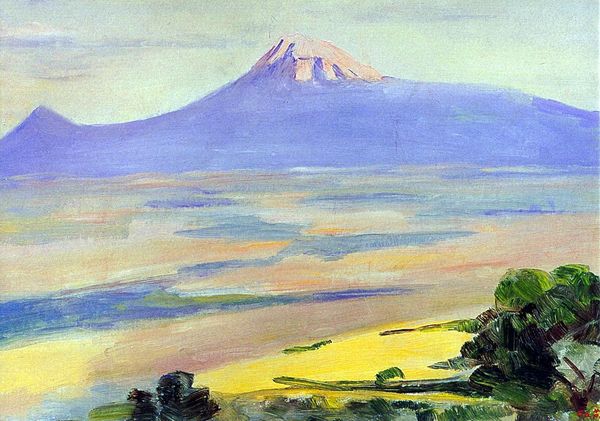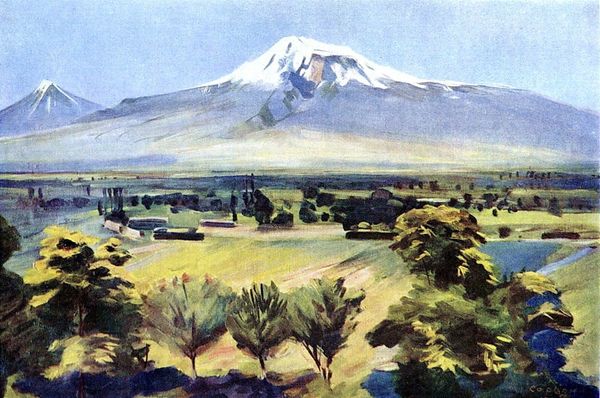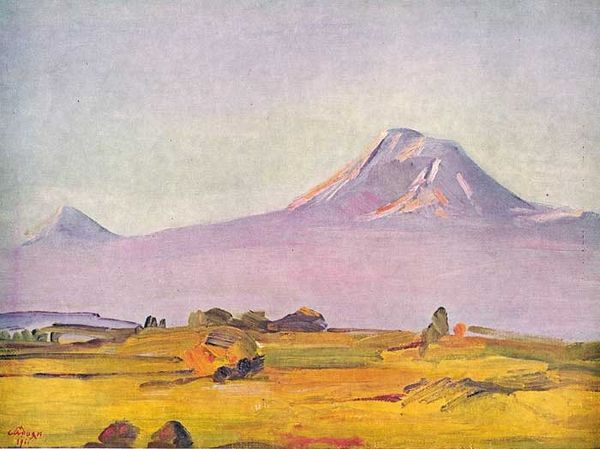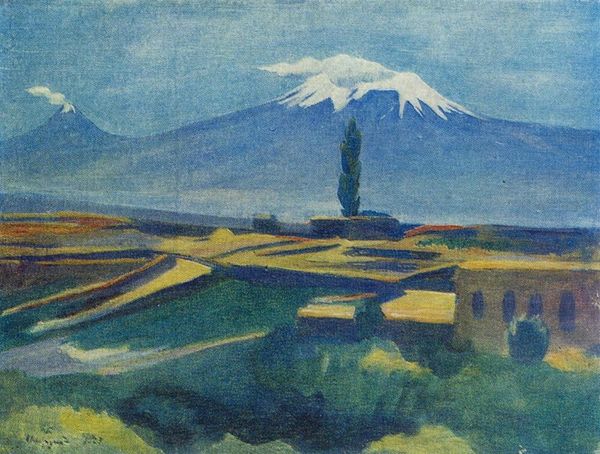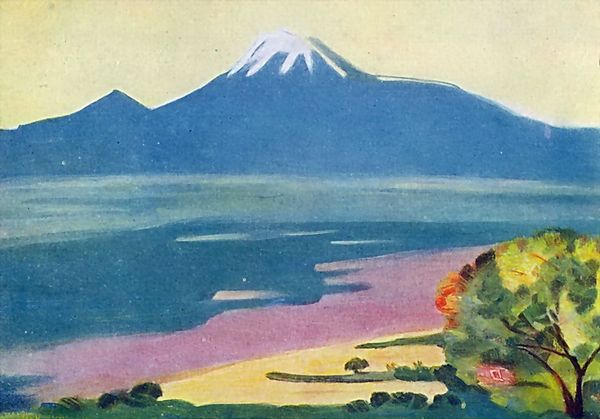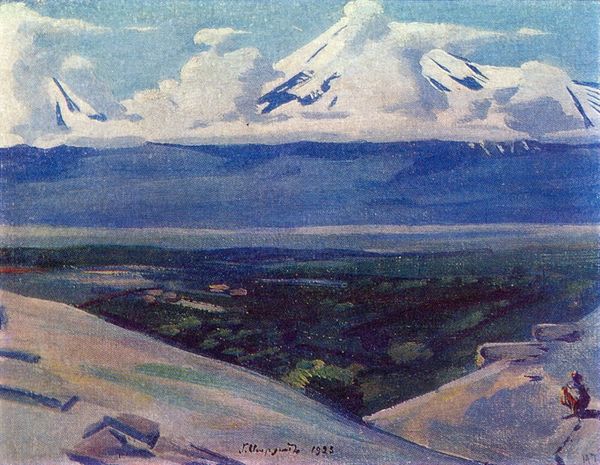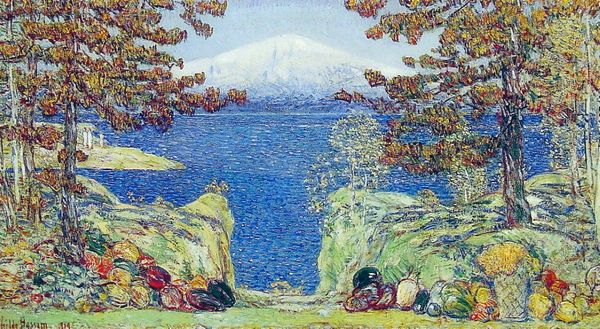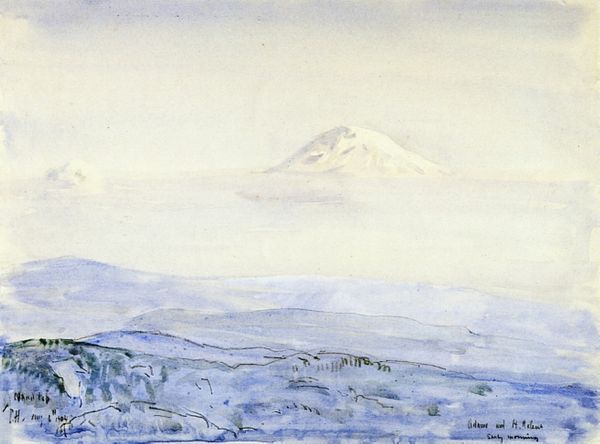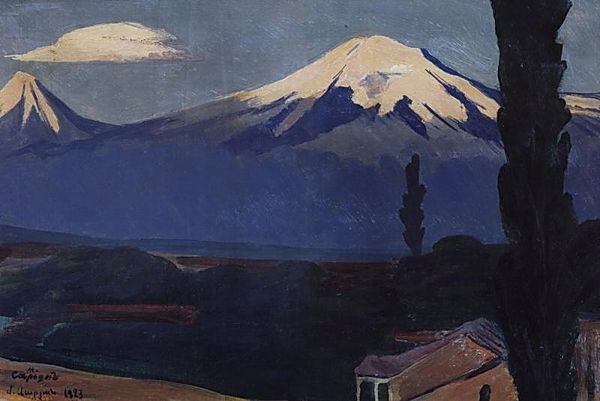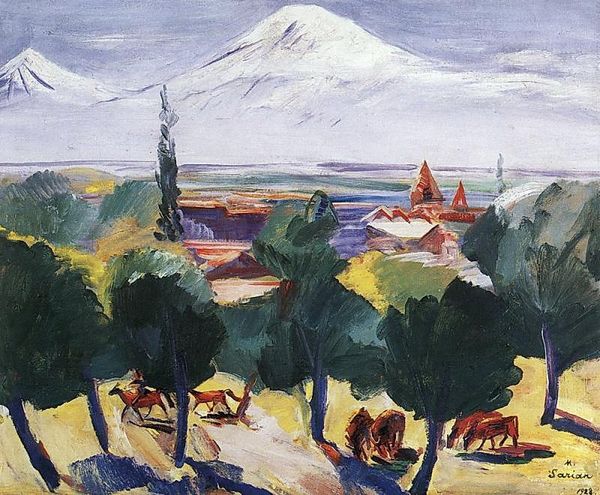
Dimensions: 35 x 49 cm
Copyright: Martiros Sarian,Fair Use
Editor: This is Martiros Sarian’s “Ararat,” painted in 1958 using oil paint. It evokes a sort of hazy dreamscape. The cool blues are contrasted by greens and browns in the foreground. What strikes you when you examine the formal elements of this piece? Curator: Indeed. The composition utilizes a distinct stratification. Notice how Sarian employs horizontal bands of color— the cerulean sky, the hazy violet mid-ground, and the verdant, textured foreground— to construct a landscape where the mountain functions almost as a symbolic obelisk. Consider the subtle gradations within each stratum; how does the artist use color to suggest depth and atmospheric perspective, particularly given the flattened picture plane? Editor: The color palette does seem carefully restricted, creating harmony, while the impasto in the foreground contrasts sharply with the smoother rendering of the mountain. Why do you think Sarian chose this contrast of textures? Curator: This juxtaposition calls attention to the painting's materiality, its constructed nature. The thickly applied paint insists on the surface, disrupting any illusionistic depth promised by the landscape genre. What, then, does this tension between representation and abstraction suggest to you? Editor: Perhaps Sarian sought to emphasize the act of painting itself. It becomes less about the accurate portrayal of a landscape and more about an exploration of color, texture, and form as their own subjects. Curator: Precisely. The subject becomes the interplay of paint, color, and composition, where “Ararat” acts as a symbolic anchor for this visual exploration. We have successfully decoded the intrinsic nature of this piece. Editor: Absolutely, understanding how the elements interact has reshaped my view. Thanks.
Comments
No comments
Be the first to comment and join the conversation on the ultimate creative platform.
